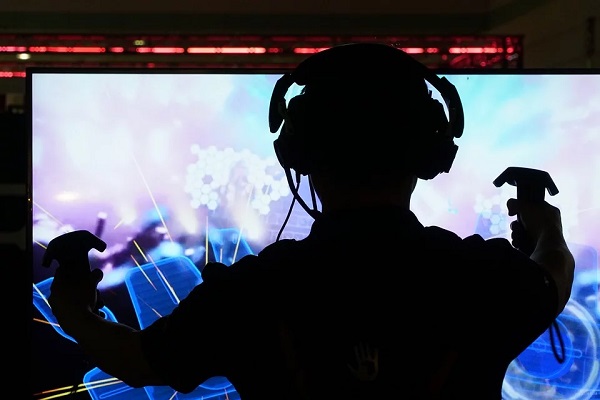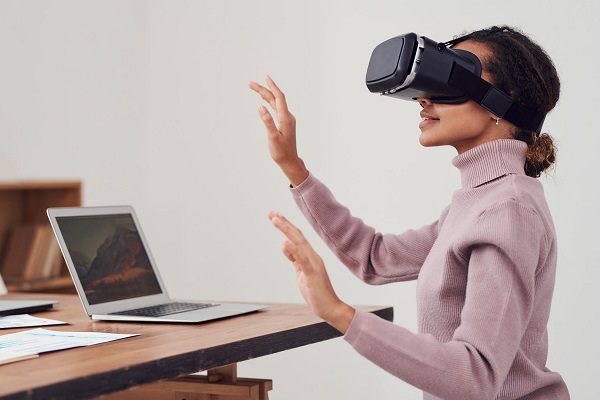
While most people think of Virtual Reality (VR) in terms of video games or immersive leisure experiences, there are a growing number of companies who are using it as a key training tool. VR training can be highly cost-effective by removing the need to travel to a training centre, and it can also be far safer, presenting potentially dangerous scenarios in a realistic but risk-free way. It is still early days for this technology, but with so many benefits it has huge potential for future training use.
How is virtual reality used?
Amongst the many ways in which VR is changing the world, VR training is one of the most practical. VR allows employees to experience an emergency and tricky to replicate scenarios, helping them learn, without actually putting them at risk. In this way, VR could save lives, and even help avoid a critical situation turning into a disaster.
In some ways, VR training has been around for a long time in the form of flight simulators and other virtual environments, and it is still leading the way in this field to train pilots, and test new equipment and emergency procedures. However, there is more to VR training than just the technical side. VR can also be used to teach so-called soft skills, such as public speaking, as well as to demonstrate the experiences of others as part of diversity training.
Examples of VR training
VR training can be applied to a wide variety of scenarios, from surgical skills to fire evacuation drills, making training feel more relevant and more realistic. For example, a paediatric hospital in Los Angeles uses a VR programme to train staff in the treatment of anaphylactic shock, while Schofield Barracks in Hawaii uses it to generate multi-user battlefield scenarios.
Of course, the scenario doesn’t necessarily have to be dangerous to benefit from VR. Walmart used VR to prepare staff for the madness that is the Black Friday shopping crowds, helping to familiarise staff with potential scenarios before the pressure and excitement of the big day.

What are the benefits of VR training?
Clearly VR has advantages in being able to create high-risk scenarios in a risk-free way and can save money for companies by limiting the time and travel required for training. However, the training itself has been shown to be advantageous, with a study by the Institute of Occupational Safety and Health in the UK showing that VR training produced better long-term retention and higher levels of engagement than a traditional PowerPoint presentation. The study also found that staff were more willing to undergo further training if the company used a VR approach.
The results of VR training are also remarkable. One training system, developed by the Johnson & Johnson Institute, was used to provide immersive training for surgeons. Amongst those who took part, the surgical performance was shown to increase by a staggering 230%.
What are the drawbacks of virtual reality training?
Despite the cost savings of localised VR training as opposed to sending staff away on training courses, VR systems do have high initial set-up costs. This means that companies have to look at the long-term gain, as in the short term, VR training may actually work out more expensive.
A reluctance from older staff to engage with the new technology has also been reported. However, as VR training becomes more widespread, costs will inevitably drop and acceptance will increase within the workforce.
What does the future hold for virtual reality training?
As processing power increases and the skills of VR designers improve, the ‘reality’ of virtual reality will only become more vivid and engaging, making training seem more realistic and relevant.
But it doesn’t stop there. One study at the University of Nottingham found that enhancing the visual and auditory input of VR with other stimuli produced significantly better results. In their fire evacuation scenario, trainees who were also exposed to heat and the smell of smoke during their VR experience reacted quicker and learned more from the training than those who only had the standard VR. Researchers suggested that the addition of other sensory inputs made the scenario feel more realistic, so trainees were less likely to approach it like a video game.
VR training may have got off to a slow start due to large setup costs and the inertia of companies to break from established procedures, but the future for the technology looks bright. As more companies incorporate VR in their training it will become commonplace, and both generic and bespoke VR training programs will become the standard approach. This means that employees of the future will be prepared for anything, making them better at their jobs, more understanding of their colleagues and customers, and safer in an emergency, than ever before.
